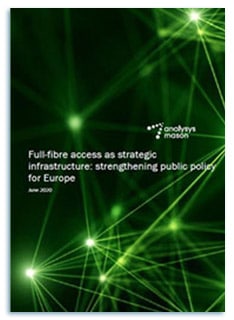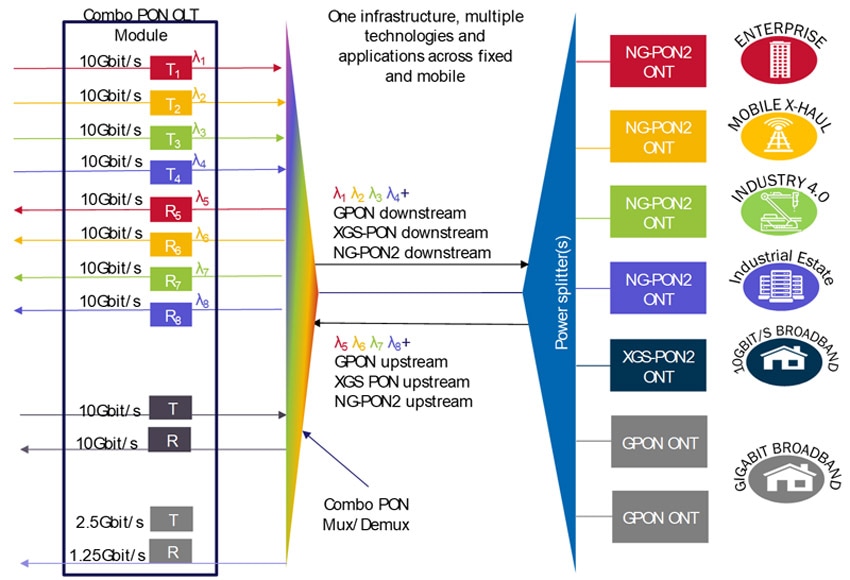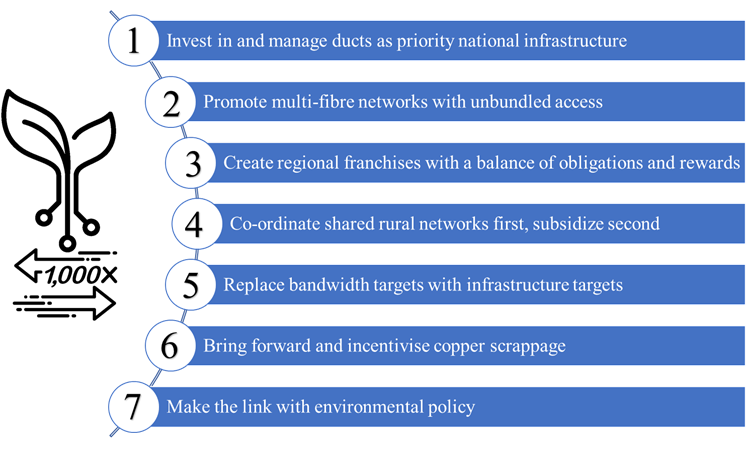Full Fibre

Full-fibre access as strategic infrastructure: strengthening public policy for Europe
Fixed broadband (FBB) is the workhorse of the internet, carrying about 90% of all traffic in Europe. 4G and 5G mobile networks grab more attention, but fixed networks do most of the work; the average FBB connection carries over 200GB per month, whereas the average mobile network connection carries about 5GB. Traffic is growing rapidly on both fixed and mobile networks, and there is no evidence that mobile is substituting fixed. The value of ubiquitous high-speed broadband connectivity has been demonstrated in numerous socioeconomic studies. Policy makers agree that there is a need for coordinated long-term investment to realize this potential. Take-up of FTTP in Europe is now accelerating fast. Looking ahead, European countries need to accelerate the rate at which access networks are being upgraded.
Copper- and coax-based technologies face performance constraints. New fibre technologies do not require alteration of the existing optical distribution network. FTTP standards have a detailed roadmap and next-generation PON systems are being deployed commercially. Growing numbers of operators are focusing more of their attention on FTTP as CAPEX and OPEX benefits become more apparent. Moreover, full-fibre networks use less energy than alternatives and fit a green agenda. FTTP networks offer ultra-low latency, which makes them suitable to be used alongside Wi-Fi 6 and 5G (and the eventual successors to these technologies), and to support AI applications. FTTP networks can also be extended to the end-user terminal and IoT devices with passive optical LAN deployments.

Figure 1: Example of aggregation of different PON technologies on the same PON network [Source: Analysys Mason, 2020]
New approaches are emerging, assisted by positive government-led policy, in particular, those that recognize the importance of fibre as national infrastructure and lower or remove barriers to deployment. Any government policy to promote full-fibre networks will contain specific practical measures to lower or remove barriers to commercial deployment, and provide loan funding or subsidies where necessary. Effective wayleave law is an important means of facilitating FTTP deployments. Infrastructure sharing reduces costs and improves speed of deployment. ‘Pre-installing’ fibre-optic cables in new real-estate developments assists the roll-out of the last mile. New technologies can improve the efficiency of Optical Distribution Network (ODN) deployment. Accelerating the rate at which copper and coax can be released is also important.

Figure: Seven key recommendations for policy [Source: Analysys Mason, 2020]
Policy should encourage options for access at as low a layer as is feasible. This means a preference for physical infrastructure access or dark fibre access. Public money, where required, should be spent enabling low layer access. As an alternative to duct build, policy should encourage or mandate the building of networks with end-to-end multi-fibre. Governments should impose stricter and more forward-looking building regulation, where this has not already been done and take measures to combat the shortage in skilled workforce required for the mass deployment of fibre. Governments should also consider tax incentives on fibre network build and on fibre customer connections. A copper scrappage scheme with a guaranteed price for scrap should also be considered.
A relentless focus on getting the right kind of infrastructure deployed rather than on bandwidth targets is the right approach.
